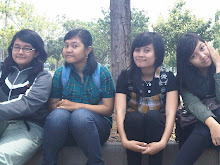Short definition about Rule-based Expert System is
an expert system based on a set of rules that a human expert would follow in diagnosing a problem.
But .. WHAT ARE RULE-based EXPERT SYSTEM completely ??
Lets learn more ..
Conventional problem-solving computer programs make use of well-structured algorithms, data structures, and crisp reasoning strategies to find solutions. For the difficult problems with which expert systems are concerned, it may be more useful to employ heuristics: strategies that often lead to the correct solution, but that also sometimes fail. Conventional rule-based expert systems, use human expert knowledge to solve real-world problems that normally would require human intelligence. Expert knowledge is often represented in the form of rules or as data within the computer.
Depending upon the problem requirement, these rules anddata can be recalled to solve problems. Rule-based expert systems have played an important role in modern intelligent systems and their applications in strategic goal setting, planning, design, scheduling, fault monitoring, diagnosis and so on. With the technological advances made in the last decade, today’s users can choose from dozens of commercial software packages having friendly graphic user interfaces (Ignizio, 1991). Conventional computer programs perform tasks using a decision-making logic containing very little knowledge other than the basic algorithm for solving that specific problem. The basic knowledge is often embedded as part of the programming code, so that as the knowledge changes, the program has to be rebuilt. Knowledge-based expert systems collect the small fragments of human knowhow into a knowledge base, which is used to reason through a problem, using the knowledge that is appropriate. An important advantage here is that within the domain of the knowledge base, a different problem can be solved using the same program without reprogramming efforts.
Moreover, expert systems could explain the reasoning process and handle levels of confidence and uncertainty,
which conventional algorithms do not handle (Giarratano and Riley, 1989). Some of the important advantages of expert systems are as follows:
• ability to capture and preserve irreplaceable human experience;
• ability to develop a system more consistent than human experts;
• minimize human expertise needed at a number of locations at the same time (especially in a hostile environment that is dangerous to human health);
• solutions can be developed faster than human experts.
The basic components of an expert system are illustrated in Figure 1. The knowledge base stores all relevant information, data, rules, cases, and relationships used by the expert system. A knowledge base can combine the knowledge of multiple human experts. A rule is a conditional statement that links given conditions to actions or outcomes. A frame is another approach used to capture and store knowledge in a knowledge base. It relates an object or item to various facts or values. A frame-based representation is ideally suited for object-oriented programming techniques. Expert systems making use of frames to store knowledge are also called frame-based expert systems. The purpose of the inference engine is to seek information and relationships from the knowledge base and to provide answers, predictions, and suggestions in the way a human expert would. The inference engine must find the right facts, interpretations, and rules and assemble them correctly. Two types of inference methods are commonly used – Backward chaining is the process of starting with conclusions and working backward to the supporting facts.
Forward chaining starts with the facts and works forward to the conclusions.
Figure 1. Architecture of a simple expert system.
The explanation facility allows a user to understand how the expert system arrived at certain results. The overall purpose of the knowledge acquisition facility is to provide a convenient and efficient means for capturing and storing all components of the knowledge base. Very often specialized user interface software is used for designing, updating, and using expert systems. The purpose of the user interface is to ease use of the expert system for developers, users, and administrators.

















